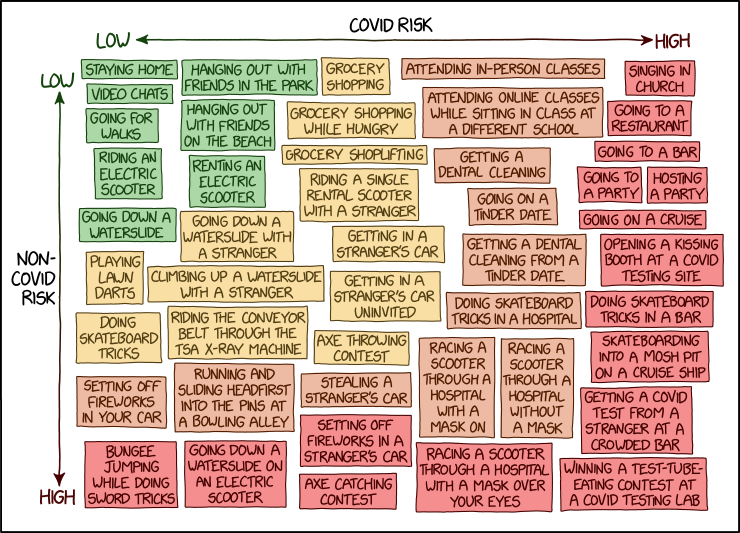I’ve been thinking about COVID risk — how we measure it and how to choose activities that are worthwhile. Like many places in the US, here in Virginia most schools are opening remotely. It’s a decision that pretty much nobody is happy with, but that may prove to be for the best.
In an NY Times editorial this weekend, Dr. Aaron E. Carroll points out that risk isn’t all-or-nothing, but is instead a series of trade offs:
Instead of asking why we can’t do certain activities, we might consider what we’re willing to give up to do them more safely. Even better, we might even consider what we’re willing to give up so others can do them, too.
—
Along these lines, XKDC published this hilarious and not inaccurate COVID Risk Chart:

Alas, “climbing up a waterslide with a stranger” wasn’t one of the activities I had in mind. But I did want to know about the risk of going to the grocery store. Or dining outside at a restaurant.
For that, the microCOVID Project is fantastic. It’s a web app that estimates the COVID risk from ordinary activities.
The team trawled the scientific literature for data about the likelihood of getting COVID from different situations, and built that into a model with a slick web-based calculator.
You put in your county, and it factors in the the COVID frequency in your area, as well as other factors — duration, number of people involved, whether or not folks are wearing masks.
It’s a great way to see the risk of dining outdoors or going for a walk or many other activities — all based on case loads in your area. And there’s a spreadsheet for tracking your exposure risk and the trade offs you make over time.
The project team uses GitHub, so have a look and contribute if that’s your thing: github.com/microcovid/microcovid.